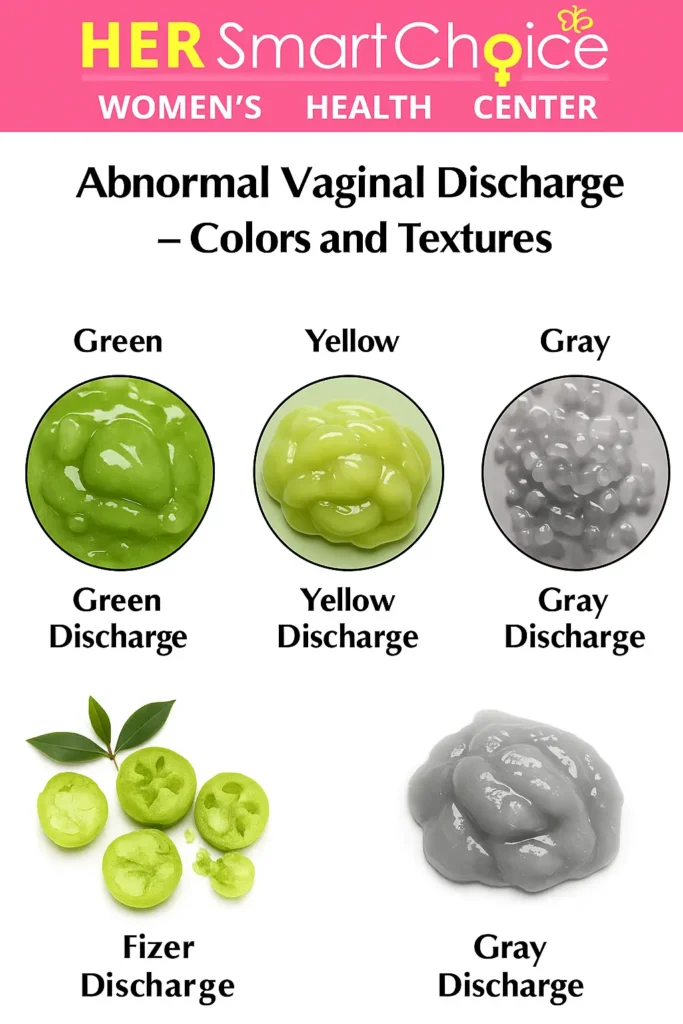Can Stress Cause Vaginal Discharge? How Stress Affects Vaginal Health
Stress influences many body systems — including the hormones, local immunity, and microbes that keep the vagina healthy. This article explains how the stress response (for example, HPA axis activation and higher cortisol) can reduce estrogen-driven lubrication, shift vaginal pH, and make bacterial or yeast overgrowth more likely. You’ll find clear descriptions of normal discharge across the cycle, examples of stress-related changes, tips to tell stress-only shifts from infection, and practical self-care steps plus guidance on when to see a clinician. Key ideas — cortisol and vaginal flora, stress and estrogen, pH shifts, and anxiety’s role — are woven through the explanations so you can answer the central question: can stress cause vaginal discharge, and what should you do about it?
Follow Us!
How Does Stress Affect Vaginal Health and Discharge?
Stress primarily affects the vagina through HPA axis activation, which raises cortisol and can change reproductive hormones, mucosal immune defenses, and the vaginal microbiome. These changes may reduce estrogen-driven lubrication and shift pH away from the Lactobacillus-dominant state that helps block harmful bacteria. The result can be measurable differences in discharge volume, texture, and odor. Understanding these pathways explains why some people notice new or different discharge during prolonged stress. The table below summarizes key hormonal and immune shifts and the likely effects on the vaginal environment.
This table summarizes how stress-related hormone and immune changes can affect the vagina:
| Hormone / System | Stress-Related Change | Downstream Vaginal Effect |
|---|---|---|
| Cortisol (HPA axis) | Higher levels with chronic stress | Less mucosal secretion and altered epithelial renewal — can cause dryness or thinner, watery discharge |
| Estrogen (reproductive hormone) | Relative reduction or disrupted cycling during sustained stress | Lower lubrication and thinner epithelium, changing discharge thickness and feel |
| Immune response (mucosal immunity) | Blunted local innate defenses | Weaker protection from lactobacilli decline, raising infection risk |
| Vaginal pH | Tends to rise if lactobacilli decrease | Creates conditions that favor BV-associated bacteria and alters odor/consistency |
These interacting changes remodel the vaginal environment and can explain shifts in discharge; recognizing them helps guide monitoring and care choices.
What Role Do Stress Hormones Like Cortisol and Estrogen Play in Vaginal Changes?

Cortisol rises with stress and can disrupt reproductive hormone signals and tissue processes in the vagina, affecting secretions and epithelial health. High cortisol may blunt estrogen’s effects, reducing glycogen in vaginal cells — the nutrient source for protective lactobacilli — and so lowering lubrication while sometimes producing thin, watery discharge. Since estrogen normally supports thicker, creamier mucus at certain cycle phases, stress can dampen those expected changes and cause symptoms like dryness or unexpected wetness. Tracking discharge across your cycle gives important context for clinicians evaluating these shifts.
Next, consider how stress alters local immune defenses that normally keep microbes in balance.
How Does Stress Weaken the Immune System and Increase Infection Risk?
Stress shifts cytokine patterns, reduces local innate responses, and lowers mucosal immunity that helps control opportunistic organisms. On the vaginal surface, these changes reduce antimicrobial peptides and weaken neutrophil and macrophage activity, making it easier for Candida or BV-associated bacteria to overgrow when the microbiome is disturbed. A less resilient microbiome is more likely to tip from harmless colonization to symptomatic infection after triggers like antibiotics, unprotected sex, or hormonal fluctuations. That link between stress and mucosal immunity helps explain why new or recurrent discharge often appears during sustained psychological strain.
Research highlights connections between stress hormones and bacterial balance in the vagina.
Stress Hormones and Vaginal Bacterial Dysbiosis This study examines how elevated stress markers — notably cortisol (and sometimes prolactin) — are associated with changes in vaginal bacteria and the development of bacterial dysbiosis, including bacterial vaginosis (BV). The stress hormones effect on the progression of vaginal bacterial dysbiosis, 2020
What Are the Normal and Stress-Related Changes in Vaginal Discharge?
Normal discharge changes with the menstrual cycle; stress-related shifts are usually subtler and affect amount or texture more than dramatic color or foul odor. Typical cycle-linked discharge ranges from thin, clear, stretchy fluid at ovulation to thicker, creamier secretions in the luteal phase and lighter fluid after menses. Stress commonly causes minor shifts — more watery volume, brief increases or decreases, or small odor changes from microbiome shifts — whereas persistent, very odorous, green/yellow, or bloody discharge suggests infection or another concern. The quick comparison below helps you spot differences and decide whether to monitor or seek testing.
This comparison helps you quickly scan common presentations and decide whether monitoring or clinical evaluation is appropriate.
| Discharge Type | Color / Consistency / Odor | Likely Interpretation |
|---|---|---|
| Normal cycle-related | Clear to white; stretchy at ovulation; little or no odor | Hormone-driven, physiologic variation |
| Stress-associated change | Slightly more watery or variable volume; mild, transient odor changes; usually no severe itching | Microbiome shifts or reduced lubrication from cortisol/estrogen effects |
| Infection-associated | Gray/green or thick white curd-like; strong fishy or yeasty smell; persistent itching or burning | BV, yeast infection, or other issue that usually needs treatment |
What Are the Typical Characteristics of Normal Vaginal Discharge?
Normal discharge helps cleanse and protect the vagina and follows predictable patterns with hormones. Expect clear, stretchy discharge around ovulation (high estrogen), creamier white discharge in the luteal phase, and small pink-tinged spotting around menses for some people; usually there’s little or no odor. Day-to-day variation is normal, but sudden or large changes from your usual baseline are worth noting. Knowing your typical pattern makes it easier to spot meaningful deviations.
How Can Stress Alter the Color, Consistency, and Odor of Vaginal Discharge?
Stress most often alters volume and texture rather than producing dramatic color changes, though microbiome disruption can cause odor or color shifts that resemble infection. Examples include thinner, watery discharge when cortisol reduces lubrication, or mild odor changes if lactobacilli decline and anaerobes increase. Persistent grayish color or a strong fishy smell is more typical of BV. Because stress effects can overlap with infection symptoms, track when changes started, how long they last, and whether you have itching, burning, or fever. If changes last longer than a cycle or come with pain or a strong odor, see a clinician.
Can Stress Cause Common Vaginal Infections Like Bacterial Vaginosis and Yeast Infections?
Yes — stress can raise the risk of bacterial vaginosis (BV) and vulvovaginal candidiasis (yeast infection) by shifting pH, reducing protective lactobacilli, and suppressing mucosal immunity. Epidemiologic and clinical observations show higher reported rates of BV and recurrent yeast in people under chronic stress, and the biological pathways linking stress hormones to immune and microbiome changes are plausible. The table below compares BV, yeast infection, and stress-only changes to help distinguish symptoms and management approaches.
This side-by-side comparison clarifies how stress relates to distinct conditions and the management approaches they typically require.
| Condition | Symptoms / Typical Discharge | pH / Role of Stress and Management |
|---|---|---|
| Bacterial vaginosis (BV) | Thin, grayish discharge with a fishy odor; itching may be mild or absent | Often pH >4.5; stress can reduce lactobacilli and raise pH, increasing BV risk; diagnosis and antibiotics or targeted therapy are common |
| Yeast infection (candidiasis) | Thick, white “cottage-cheese” discharge with intense itching, burning, and redness | pH usually normal (~4.0–4.5); stress-related immune change can allow Candida overgrowth; antifungal treatment is typical after evaluation |
| Stress-only changes | More watery volume or mild odor change without severe itching or persistent strong smell | pH may shift slightly; monitoring and stress-reduction often help unless infection signs appear |
Researchers have long studied connections between psychosocial stress and BV risk.
Psychosocial Stress and the Risk of Bacterial Vaginosis This review links psychosocial stressors and social disadvantage to increased BV risk, discussing behavioral contributors and physiological pathways (immune changes) that may explain observed disparities in BV incidence. Stress, bacterial vaginosis, and the role of immune processes, VA Rauh, 2006
How Does Stress Contribute to Bacterial Vaginosis Symptoms and Vaginal pH Imbalance?
Stress can favor BV by creating hormonal and immune conditions that let Lactobacillus populations fall and vaginal pH rise. Cortisol-linked changes may reduce epithelial glycogen and weaken local antimicrobial defenses, removing support for lactic-acid–producing lactobacilli. The resulting environment can produce a thin, gray discharge with a fishy odor and pH often above 4.5. Clinicians confirm BV with testing before recommending treatment. Addressing stress and restoring microbiome balance can be part of prevention and management.
Because BV usually needs clinical diagnosis, the following section contrasts yeast infection signs.
Can Stress Trigger Yeast Infections and What Are Their Signs?
Stress can precipitate yeast infections by weakening immune surveillance and local defenses that keep Candida in check. Typical signs of vulvovaginal candidiasis include thick, white curd-like discharge, intense vulvar itching, burning, and redness; odor is usually minimal compared with BV. Stress-related immune suppression is one plausible trigger for recurrent episodes, though antibiotics, diabetes, and hormonal factors also play roles. Correct identification matters because yeast infections and BV require different treatments.
When Should You Seek Medical Advice for Stress-Related Vaginal Discharge?
Knowing when to seek care helps avoid unnecessary treatment and ensures timely evaluation for infections or other problems. Red flags include severe pain, fever, heavy bleeding outside your period, and strongly odorous or discolored discharge. If symptoms are new, last longer than one cycle, or come with pelvic pain, fever, or painful sex, get evaluated. The checklist below highlights warning signs and why each one warrants clinical attention.
- Severe pelvic or lower abdominal pain that limits activity or comes with fever.
- Green, yellow, or gray discharge with a persistent, foul odor.
- Intense vulvar itching and burning, especially if over-the-counter care doesn’t help.
- Bleeding between periods or after sex, or any unexplained heavy bleeding.
- Symptoms that continue for more than one full menstrual cycle despite conservative self-care.
These signs point to conditions that usually need diagnostic testing or urgent treatment rather than watchful waiting.
Before a visit, a short symptom note helps clinicians assess stress as a contributor; include onset, how symptoms vary with your cycle, other symptoms, recent antibiotics or new partners, and recent stressors or changes in sleep or diet. Mention any past diagnoses or treatments. A concise checklist makes appointments more productive and helps clinicians choose appropriate tests or empiric treatment.
It’s also useful to know how to frame stress when you talk with a clinician so it’s considered in the overall plan.
What Are the Warning Signs of Concerning Vaginal Discharge?
Concerning discharge is typically persistent, strongly odorous, colored (green, yellow, gray), or accompanied by severe itching, pain, fever, or bleeding. A fishy smell often points to BV; thick white curd-like discharge with intense itching suggests candidiasis; and greenish or purulent discharge can indicate an STI or pelvic infection that needs prompt care. People with diabetes, weakened immune systems, or frequent recurrences should seek earlier evaluation because they’re at higher risk for complications or atypical presentations. Recognizing these signs supports timely testing and appropriate treatment.
Clear, concise symptom descriptions improve diagnostic accuracy, which we cover next.
How Can You Effectively Communicate Stress and Discharge Symptoms to Your Doctor?
A short, structured report helps clinicians evaluate symptoms and consider stress efficiently. Include onset, duration, color, consistency, odor, related symptoms, sexual history, recent antibiotics, and major stressors or mood changes. Try a script like: “I noticed increased watery discharge three weeks ago, worse during a stressful period at work and with poor sleep. There’s a mild odor but no fever; I had yeast treatment two years ago.” That gives clinicians the timeline and triggers they need to decide on tests (pH, microscopy, NAAT) and whether stress may be a factor. Ask about combined approaches that address both infection risk and stress management.
Psychosocial factors like stress play a meaningful role in maintaining vaginal health.
Psychosocial Stress and the Maintenance of Vaginal Health This paper reviews links between psychosocial stress, cortisol, and vaginal health, highlighting how stress-related physiological changes can affect mucosal defenses and microbial balance. Psychosocial stress, cortisol levels, and maintenance of vaginal health, E Amabebe, 2018
If you plan a clinic visit, contact local sexual and reproductive health clinics or your primary care provider for confidential testing and care. Preparing a brief symptom note and stress history can make the visit more efficient; ask when scheduling about available tests and any specimen prep required.
What Holistic Stress Management Techniques Support Healthy Vaginal Discharge?

Lowering chronic stress supports hormone balance, immune function, and microbiome resilience — all of which help normalize discharge patterns. Practical, evidence-informed methods include mindfulness, cognitive-behavioral tools, breathing exercises, better sleep, regular movement, and a microbiome-friendly diet.
Mind–body practices can reduce cortisol and inflammation, improving mucosal defense and supporting estrogen balance; better sleep and diet further strengthen immunity. Below are concise, actionable strategies with evidence for lowering physiological stress and supporting reproductive health.
- Daily mindfulness or short meditation (5–20 minutes) to reduce cortisol and improve emotional regulation.
- Cognitive-behavioral techniques like reframing and structured problem-solving to cut rumination and physiological arousal.
- Regular moderate exercise (e.g., 30 minutes of brisk walking most days) to boost sleep, lower stress hormones, and support immunity.
- Sleep hygiene: keep a regular schedule, limit screens before bed, and make the bedroom cool and dark to help hormone balance.
- Microbiome-friendly nutrition: fiber-rich foods, fermented options, and limiting excess sugar/alcohol to support microbial resilience.
Start with small changes and build consistency; many people notice measurable benefits over weeks to months.
Below are quick mindfulness and relaxation practices you can begin right away.
How Do Mindfulness, Meditation, and Relaxation Improve Vaginal Health?
Mindfulness and brief relaxation reduce sympathetic activity and lower cortisol, which can help restore estrogen-driven mucosal secretions and strengthen immune defenses at mucosal surfaces. Simple practices — 5-minute paced breathing, a short body scan, or progressive muscle relaxation — are easy to do daily and are linked to reduced perceived stress and lower cortisol in studies. Over time, lower baseline stress can lead to steadier lubrication and fewer stress-triggered microbiome disturbances, reducing episodes of troublesome discharge. Starting with short, guided sessions and building a daily habit is a practical way to support vaginal health alongside medical care when needed.
The next section outlines lifestyle steps that reinforce hormonal balance and immune resilience.
What Lifestyle Changes Help Balance Hormones and Reduce Stress Effects?
Consistent sleep, balanced nutrition, and regular activity improve hormone regulation and immune function, which protect vaginal health. Aim for 7–9 hours of sleep, regular moderate exercise, and a diet rich in fiber and lean protein while moderating alcohol and processed sugars. Quitting smoking and avoiding unnecessary antibiotics also help preserve lactobacilli and stable pH. Small, sustainable adjustments over weeks to months often reduce infection recurrence and improve discharge patterns.
Pair a short daily mindfulness habit with gradual diet and sleep improvements, and seek professional help when stress or symptoms are severe or persistent.
How Does Anxiety Specifically Influence Vaginal Discharge and Overall Vaginal Wellness?
Chronic anxiety increases sympathetic nervous system activity and HPA axis activation, intensifying the pathways that alter vaginal secretions and immune defenses. Studies and clinical experience link anxiety and depression with more reports of abnormal discharge — through actual physiologic changes or increased symptom awareness. Distinguishing anxiety-driven symptom amplification from true infection is important; treating anxiety can reduce symptom burden and lower the frequency of stress-related discharge complaints. The summary below explains the relationship and practical ways to address anxiety for better vaginal outcomes.
Treating anxiety directly often improves both perceived symptoms and physiological risk factors over time.
What Is the Relationship Between Anxiety and Vaginal Discharge Changes?
Anxiety affects vaginal health both physiologically (chronic sympathetic and HPA activation altering hormones and immunity) and psychologically (heightened attention to bodily sensations). Chronic anxiety can disrupt cortisol rhythms, reduce mucosal secretions, and weaken immune responses that keep the microbiome balanced, increasing infection risk. At the same time, increased vigilance can make normal cycle-related discharge feel concerning. Clinicians look at objective signs (pH, microscopy, cultures) alongside psychological context to separate perception from pathology and design combined interventions.
This dual pathway suggests that treating anxiety as part of care may reduce both real and perceived symptoms.
How Can Managing Anxiety Improve Vaginal Health Outcomes?
Effective anxiety treatments — such as cognitive behavioral therapy, mindfulness-based stress reduction, and medication when appropriate — lower HPA axis overactivity and sympathetic tone, helping normalize hormones and immune function important for vaginal health. Over weeks to months, better anxiety control often means fewer flare-ups of discharge complaints and fewer infections when stress was the trigger. Next steps include talking with your primary care or mental health provider, trying brief behavioral interventions, and coordinating care with a gynecologist if symptoms continue. Integrating mental health support into vaginal health care creates a more complete plan that addresses both triggers and symptoms.
Remember the article’s core goal: to explain how stress can influence vaginal discharge and give trustworthy, practical guidance on what’s normal and when to seek care.
Frequently Asked Questions
Yes. Stress can disrupt the hormones that regulate your cycle, causing missed periods, heavier or lighter bleeding, or changes in cycle length. The HPA axis can interfere with normal reproductive signaling, so if you notice persistent cycle changes with high stress, track them and discuss them with your clinician.
Look at the discharge’s traits and other symptoms. Stress-related changes are usually watery or variable in amount, with only minor odor shifts and no severe itching. Infection often brings a strong smell, unusual color (green or yellow), and intense itching or burning. If changes persist, worsen, or come with pain or fever, seek medical evaluation.
Regular exercise, consistent sleep, and a balanced diet help lower stress and support immune and hormonal health. Mindfulness practices, like short daily meditation, reduce cortisol. Including fiber and fermented foods supports the microbiome. These habits together can reduce stress-related vaginal symptoms.
Foods with probiotics (yogurt, kefir, fermented vegetables) can support a healthy microbiome. Omega‑3 sources (salmon, walnuts) help reduce inflammation and support hormonal balance. Fiber-rich fruits, vegetables, and whole grains support overall health and stress management. Avoiding excess sugar and alcohol also helps maintain microbial balance.
Anxiety can change discharge both physiologically and psychologically. Chronic anxiety alters hormone and immune patterns that affect secretions, and heightened body awareness can make normal discharge feel abnormal. Addressing anxiety with therapy or mindfulness often reduces both the sensation and frequency of troublesome discharge.
Try short daily mindfulness or breathing exercises, progressive muscle relaxation, and regular moderate exercise. Improve sleep habits and make time for hobbies or social support. These approaches lower cortisol, improve mood, and support immune resilience, which together benefit vaginal health.
See a healthcare provider if discharge is persistent or comes with severe pain, fever, unusual odor, or abnormal color, or if symptoms last beyond one menstrual cycle. Also seek help if the symptoms cause significant emotional distress. A clinician can test for infection, suggest appropriate treatment, and help you address stress as part of the plan.
Conclusion
Stress can change hormones, immune defenses, and the vaginal microbiome, and those shifts may alter discharge. Many stress-related changes are mild and temporary, but persistent, strongly odorous, colored, or painful symptoms deserve medical evaluation. Simple stress-reduction practices, better sleep and nutrition, and clear communication with your clinician can all help. If you’re unsure or worried, reach out to a healthcare professional for personalized advice and testing.
Follow Us!
























